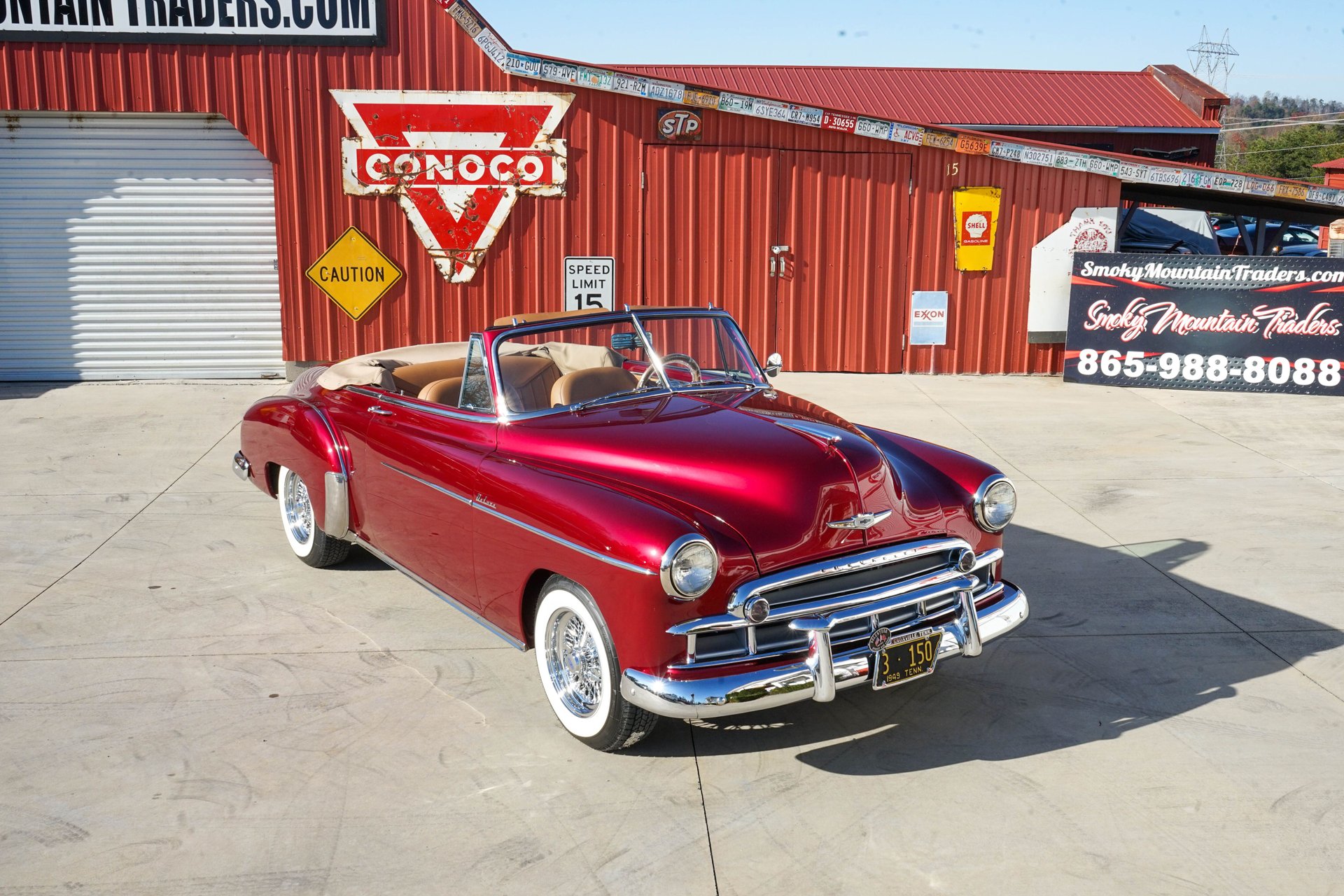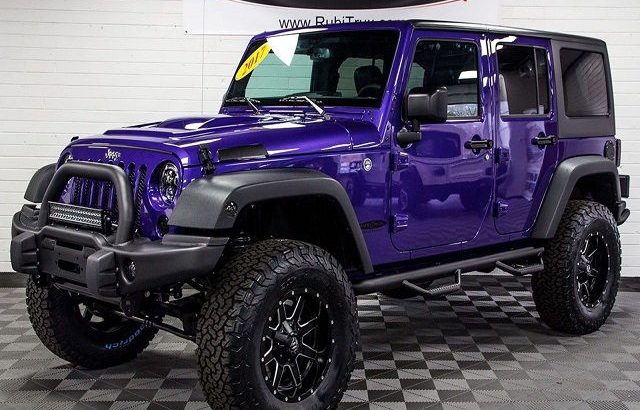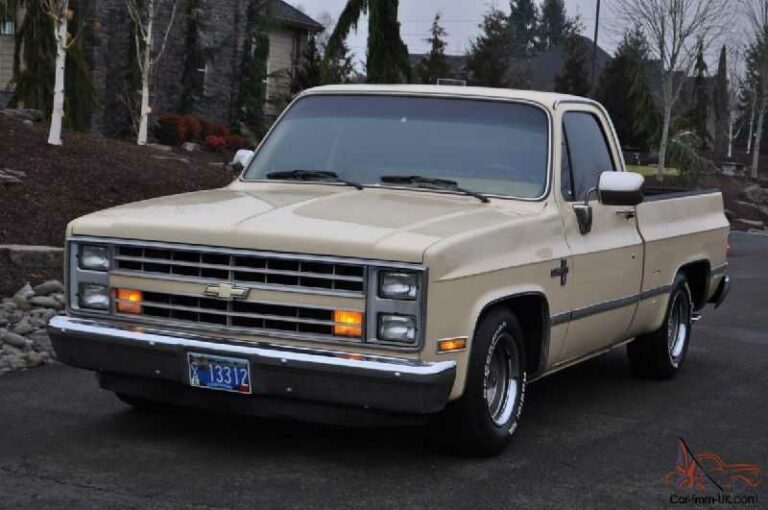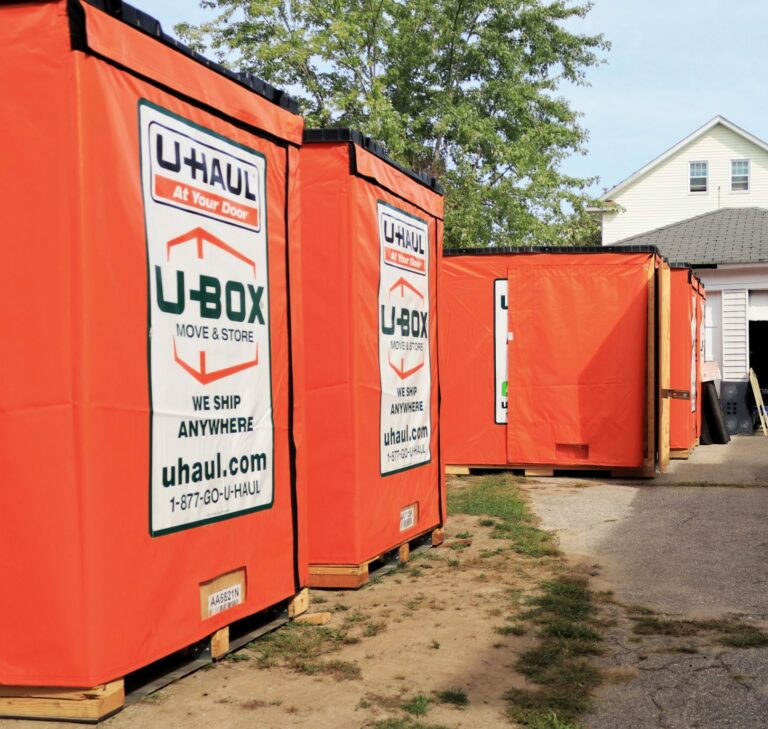1949 To 1952 Chevy Trucks For Sale: Your Comprehensive Guide to an American Icon
1949 To 1952 Chevy Trucks For Sale: Your Comprehensive Guide to an American Icon cars.truckstrend.com
Few vehicles evoke the timeless spirit of post-war America quite like the Chevrolet Advance-Design trucks. Produced from 1947 to 1955, the models specifically from 1949 to 1952 represent a sweet spot in this iconic series. These trucks are not just pieces of automotive history; they are highly sought-after collector’s items, versatile platforms for customization, and enduring symbols of American ingenuity. Whether you’re a seasoned classic car enthusiast or a newcomer dreaming of owning a piece of the past, understanding the nuances of these beautiful machines is crucial. This comprehensive guide will navigate you through everything you need to know about finding, evaluating, and purchasing a 1949-1952 Chevy truck.
1949 To 1952 Chevy Trucks For Sale: Your Comprehensive Guide to an American Icon
The Advance-Design Era: A Brief History (1949-1952)
Chevrolet’s Advance-Design series was a radical departure from its pre-war predecessors. Launched in mid-1947, these trucks were designed with comfort, safety, and functionality in mind – a significant upgrade from the utilitarian vehicles of the past. The years 1949 to 1952 fall squarely within this era, showcasing a consistent design philosophy with minor, yet notable, year-to-year variations.
- Design Philosophy: The Advance-Design trucks featured a wider, lower, and longer cab, providing more interior space and improved visibility thanks to a larger rear window. The styling was smoother, more aerodynamic, and visually appealing than previous workhorses.
- Engine: The primary powerplant for these years was the venerable 216 cubic inch (3.5L) "Thriftmaster" inline-six engine, known for its reliability and torque, though not its speed. Later 1952 models might see the introduction of the slightly larger 235 cubic inch engine in some heavy-duty applications, foreshadowing its broader adoption.
- Year-Specific Details (1949-1952):
- 1949: Largely carried over from 1948, solidifying the new design.
- 1950: Minor updates, including new hood side emblems (which varied between models like 3100, 3600, etc.).
- 1951: The most notable change was the introduction of vent windows (wing windows) in the doors, greatly improving cabin ventilation. This is a key distinguishing feature for 1951-1952 models.
- 1952: Continuation of the 1951 design with minor trim variations. The 235 cu in engine became more common in larger trucks and Suburbans.
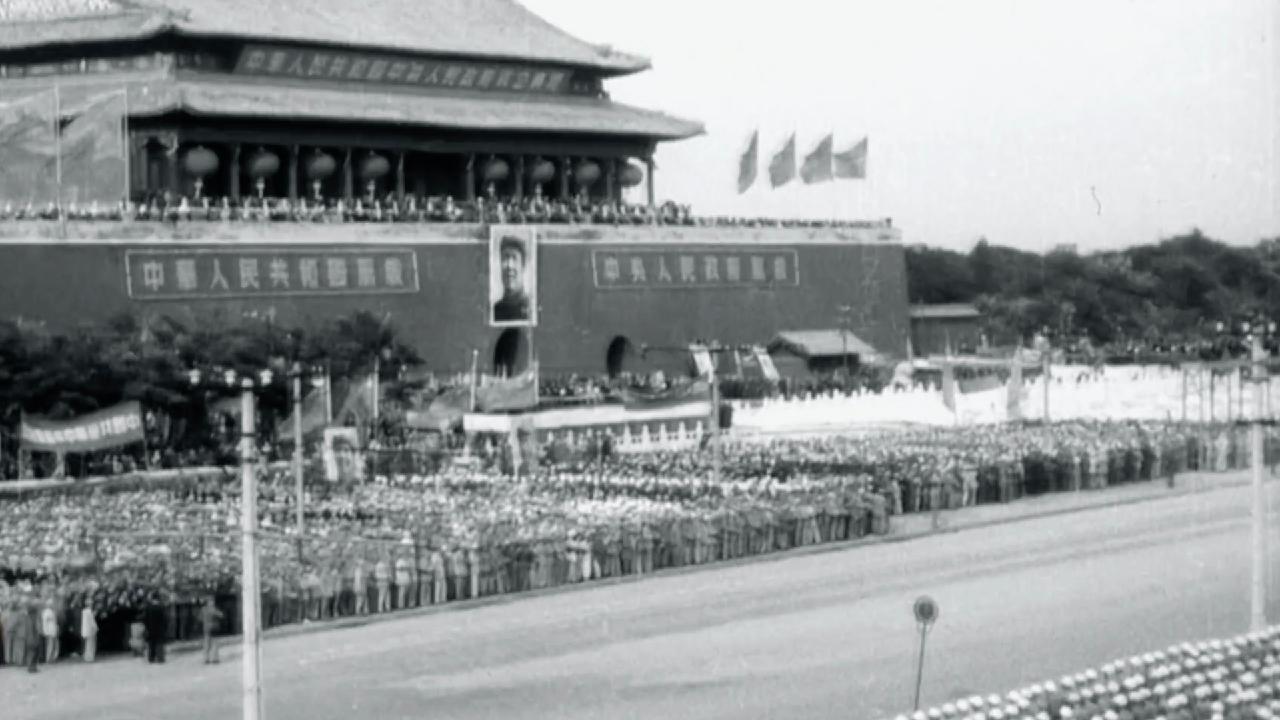
- Post-War Boom: These trucks were instrumental in rebuilding America after WWII, serving as reliable workhorses for businesses, farms, and families. Their robust construction and simple mechanics ensured longevity, contributing to their enduring presence today.

Why Buy a 1949-1952 Chevy Truck?
The appeal of these classic Chevy trucks goes beyond nostalgia. They offer a unique blend of timeless aesthetics and practical versatility, making them an excellent choice for a wide range of buyers.
- Iconic Styling: The smooth, rounded lines, prominent grille, and distinct fenders are instantly recognizable and universally admired. They possess an undeniable charm that modern vehicles often lack.
- Versatility for Customization: These trucks are a blank canvas. Their simple, body-on-frame construction makes them ideal for various projects:
- Full Restorations: Bringing a truck back to its original factory condition.
- Resto-Mods: Combining classic looks with modern comfort, power, and safety (e.g., V8 engine swap, power steering, disc brakes, air conditioning).
- Hot Rods/Custom Builds: Aggressive stance, custom paint, chopped tops, and high-performance engines.
- Daily Drivers: With proper upgrades, they can be reliable and comfortable for regular use.
- Strong Parts Availability: Due to their immense popularity, the aftermarket for Advance-Design parts is extensive. Reproduction body panels, trim, mechanical components, and interior pieces are readily available, making restoration or customization projects feasible.
- Vibrant Community: Owning one of these trucks connects you to a passionate community of enthusiasts. Forums, clubs, and online groups offer a wealth of knowledge, support, and camaraderie.
- Potential for Appreciation: While not a guaranteed investment, well-restored or tastefully modified examples can hold or increase their value over time, especially as the supply of good original examples diminishes.
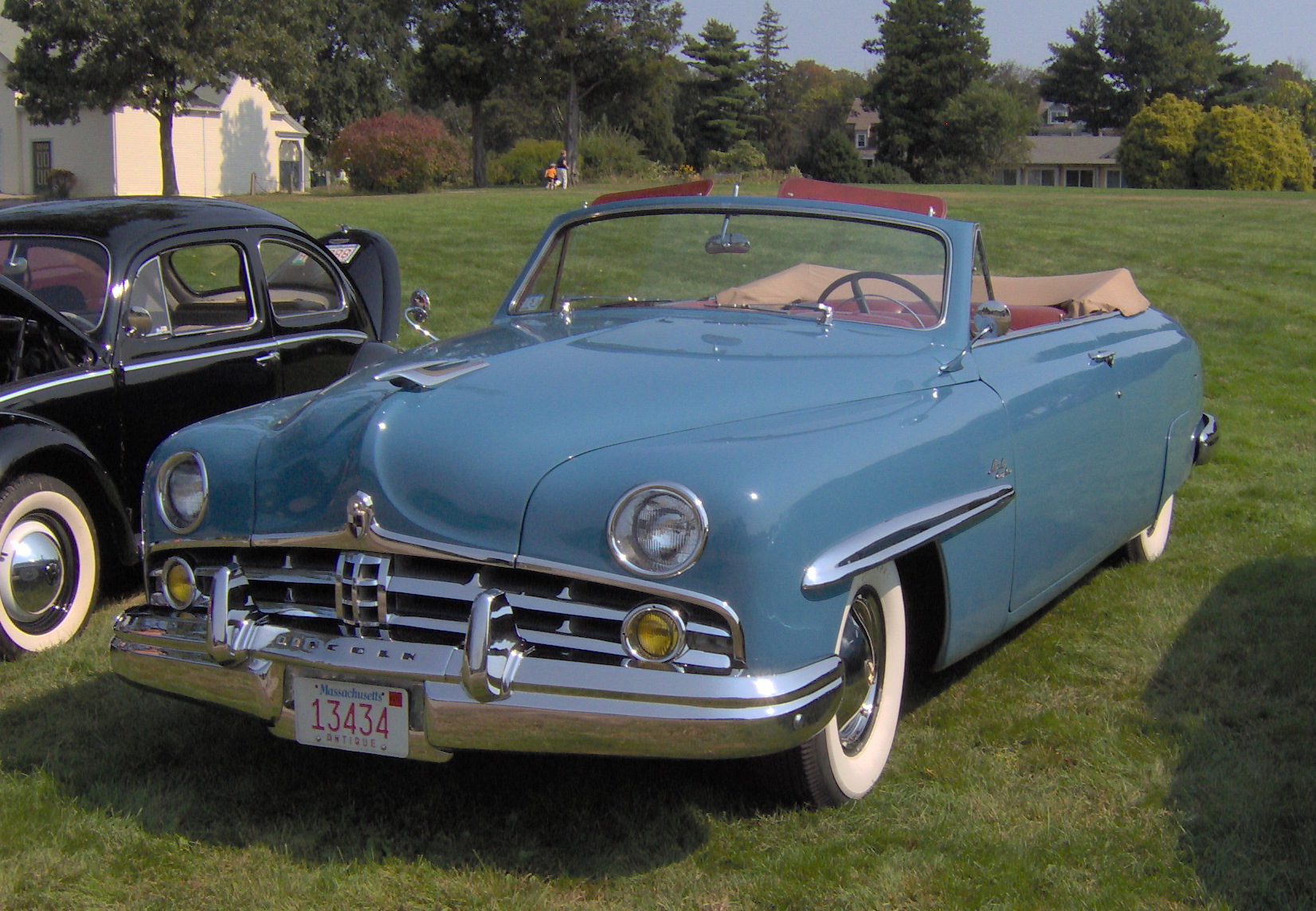
Key Models and Body Styles
While "Chevy Truck" often conjures images of the half-ton pickup, the Advance-Design series offered a variety of configurations.
- 3100 Series (Half-Ton): This is by far the most popular and recognizable model. It’s the quintessential pickup truck, ideal for most restoration and customization projects due to its manageable size and wide availability of parts.
- 3600 Series (Three-Quarter-Ton): Slightly larger and more robust than the 3100, featuring heavier axles and springs for increased payload capacity. Often identifiable by their longer beds and more lug nuts on the wheels.
- 3800 Series (One-Ton): The heavy-duty workhorse, featuring a longer wheelbase, dually rear wheels (often), and even stronger components. Less common for hot rod builds, but prized by those seeking a unique, heavy-duty classic.
- Panel Trucks: Enclosed cargo vans with no rear side windows, popular for commercial use and now for custom builds, often converted into cool cruisers or even campers.
- Suburban Carryall: The ancestor of the modern SUV, these were passenger wagons based on the truck chassis, offering seating for multiple passengers and cargo space. Highly desirable and often command premium prices.
- Canopy Express: A rare variant similar to a panel truck but with an open rear section, often used for delivery or light utility.
The 3100 series pickup is typically the easiest to find and the most affordable entry point for most buyers.
What to Look For When Buying (Important Considerations)
Purchasing a classic truck requires careful inspection and a clear understanding of its condition. Here are critical areas to examine:
- Rust: This is the number one enemy. Check:
- Cab Corners and Rocker Panels: Extremely common rust spots.
- Floor Pans: Especially under the accelerator pedal and passenger side.
- Fender Bottoms: Front and rear.
- Bed Floors and Supports: Where water and debris collect.
- Mounting Points: Cab mounts, bed mounts, body mounts.
- Frame: Look for surface rust, but more importantly, deep pitting, cracks, or previous shoddy repairs. A solid frame is paramount.
- Body Straightness and Panel Gaps: Check for accident damage, poor previous repairs, or bondo. Uneven panel gaps often indicate underlying issues.
- Engine and Drivetrain:
- Original 216/235 Inline-Six: Listen for knocking, excessive smoke (blue/black), and unusual noises. Check for oil leaks. These engines are generally robust but can be tired.
- Modern Swaps: If it has a V8 or modern engine, inquire about the quality of the swap. Is it professionally done? Are the mounts solid? Is the wiring neat?
- Transmission: Manual 3-speed (column or floor shift) was standard. Check for smooth shifting, no grinding, and proper clutch engagement. Automatic swaps are common in resto-mods.
- Rear Axle: Check for leaks, excessive noise, or play.
- Suspension, Steering, and Brakes:
- Original Components: Leaf springs, straight axle front end. Check for worn bushings, shocks, kingpins, and excessive play in the steering. Original drum brakes are adequate but can be upgraded to discs for safety.
- Upgraded Components: Many trucks have independent front suspension (IFS) conversions, power steering, and power disc brakes. Assess the quality of these upgrades.
- Electrical System: Original 6-volt systems are fine if maintained, but many are converted to 12-volt for easier starting, brighter lights, and modern accessories. Check all lights, gauges, and wiring for frayed wires or amateur repairs.
- Interior: Seat condition, dashboard completeness, gauge functionality, and general cleanliness. A complete original interior is a plus, even if worn.
- Paperwork: Ensure the truck has a clean title, and the VIN on the title matches the truck’s VIN tag (usually on the driver’s door jamb). Be wary of trucks without proper documentation.
- Originality vs. Modification: Decide what you’re looking for. A highly original, numbers-matching truck will command a premium but might require more extensive restoration. A modified truck could save you time and money on upgrades but might not appeal to purists.
Restoration vs. Resto-Mod vs. Hot Rod: Choosing Your Path
Before you buy, envision your ideal truck. This will guide your search and budget.
- Full Restoration: Aiming for factory originality, period-correct parts, and meticulous detail. This is often the most expensive and time-consuming path, requiring specialized knowledge and sourcing rare components. The result is a museum-quality showpiece.
- Resto-Mod: The "best of both worlds." It retains the classic exterior and interior aesthetics but integrates modern mechanicals (engine, transmission, suspension, brakes, air conditioning, power steering). This offers reliability, comfort, and performance for enjoyable driving, often at a lower cost than a full restoration.
- Hot Rod/Custom: Focuses on radical customization, often involving engine swaps, chopped tops, custom paint, significant suspension modifications, and unique styling elements. These are built for performance, show, or personal expression, often sacrificing some practicality.
- Daily Driver: A truck that is mechanically sound, safe, and reliable enough for regular use. It might have some modern conveniences and aesthetic imperfections, but its primary purpose is practical transportation. This often involves a sensible resto-mod approach.
Where to Find 1949-1952 Chevy Trucks For Sale
The market for these trucks is robust, offering several avenues for finding your dream vehicle:
- Online Marketplaces:
- eBay Motors: A wide range of conditions, from projects to finished trucks.
- Hemmings.com: A premier source for classic vehicles, often featuring higher-quality examples.
- ClassicCars.com: Another excellent aggregator of classic car listings.
- Bring a Trailer (BaT): Curated online auctions often feature high-quality, well-documented builds, but prices can be competitive.
- Facebook Marketplace/Groups: Local listings and specialized classic truck groups can yield hidden gems.
- Specialized Classic Truck Dealers: Many dealers specialize in vintage trucks, offering inspected vehicles, though usually at a premium.
- Auctions: Major automotive auctions (e.g., Mecum, Barrett-Jackson) occasionally feature exceptional examples, often fully restored or high-end resto-mods.
- Local Classifieds & Word-of-Mouth: Sometimes the best deals are found through local networks or by simply asking around in rural areas.
Tips for a Successful Purchase
- Set a Realistic Budget: Beyond the purchase price, factor in potential restoration costs, upgrades, shipping, insurance, and ongoing maintenance.
- Inspect Thoroughly: If possible, inspect the truck in person. Bring a knowledgeable friend or hire a professional pre-purchase inspector.
- Ask for Documentation: Request service records, restoration photos, and any history of the truck.
- Research Market Values: Use online resources, auction results, and dealer listings to understand what different conditions and levels of restoration are commanding.
- Don’t Rush: The right truck will come along. Patience is key to avoiding buyer’s remorse.
- Factor in Shipping: Unless you’re picking it up yourself, budget for enclosed transport, especially for a finished vehicle.
Estimated Price Guide: 1949-1952 Chevy 3100 Half-Ton Pickups
Prices for 1949-1952 Chevy trucks can vary wildly based on condition, originality, modifications, and location. This table provides a general estimate for the popular 3100 half-ton pickup, as of late 2023/early 2024. Prices for Panel Trucks, Suburbans, and rarer models will generally be higher.
| Condition Category | Description | Estimated Price Range (USD) | Key Factors Influencing Price |
|---|---|---|---|
| Project | Requires full restoration; significant rust, mechanical issues, missing parts. Not drivable. | $5,000 – $15,000 | Severity of rust, completeness, presence of title, original engine/components (even if seized), desirability of specific year/model. |
| Driver Quality | Drivable; mechanically sound but cosmetically rough or "patina" look. Minor rust, older paint. | $15,000 – $30,000 | Reliability, safety (brakes/steering), extent of rust, quality of previous repairs, condition of interior, presence of modern upgrades (e.g., 12V conversion, disc brakes). |
| Resto-Mod | Modern drivetrain/suspension/brakes installed; classic exterior. Quality of components and installation. | $35,000 – $75,000+ | Quality of the build, type of engine swap (LS engines command more), brand of aftermarket components, level of interior customization, paint quality, overall fit and finish. Top-tier professional builds can exceed $100,000+. |
| Restored/Show | Fully restored to near-original or better-than-new condition. High-quality paint, interior, mechanics. | $40,000 – $80,000+ | Level of originality (numbers matching), quality of restoration, awards/accolades, rarity of specific options/colors, attention to detail. Concours-level restorations of rare models can reach six figures. |
| Exceptional | Flawless show-quality resto-mods or perfectly restored, numbers-matching originals with unique history. | $80,000 – $150,000+ | Uniqueness, professional build quality, celebrity ownership, significant awards, rare factory options, meticulous documentation. |
Note: These are estimates. Market conditions, regional demand, and specific vehicle features can cause significant variations.
Frequently Asked Questions (FAQ)
Q1: Are parts readily available for 1949-1952 Chevy trucks?
A1: Yes, absolutely! Due to their immense popularity, the aftermarket is flooded with reproduction parts for body panels, trim, mechanical components, and interior pieces, especially for the 3100 series. Some year-specific or rare trim pieces might be harder to find, but overall availability is excellent.
Q2: What’s the difference between a 6-volt and 12-volt electrical system, and which should I look for?
A2: Original 1949-1952 trucks came with a 6-volt electrical system, which can be slower to crank and result in dimmer lights. Many owners convert to 12-volt for easier starting, brighter lights, and compatibility with modern accessories like stereos, phone chargers, and EFI systems. A well-done 12-volt conversion is generally preferred for a daily driver or resto-mod.
Q3: Can a 1949-1952 Chevy truck be a reliable daily driver?
A3: With appropriate upgrades, yes. While a completely stock truck might be challenging for modern traffic, a resto-mod with a modern engine (like an LS swap), disc brakes, power steering, and a modern suspension can be incredibly reliable, comfortable, and safe for daily driving.
Q4: What kind of fuel economy can I expect?
A4: A stock 216/235 inline-six engine typically delivers single-digit to low-teens miles per gallon (MPG), depending on driving conditions and maintenance. Modern engine swaps (like a V8) can often provide better fuel economy and significantly more power.
Q5: Are they easy to work on for a beginner?
A5: Their mechanicals are relatively simple compared to modern vehicles, making them accessible for those with basic mechanical skills. However, restoration or major customization requires patience, specialized tools, and a willingness to learn. Many resources (forums, manuals, YouTube) are available to guide you.
Q6: What about the VIN (Vehicle Identification Number)?
A6: VINs on these trucks are much shorter than modern VINs, typically found on a small metal tag on the driver’s side door jamb. They usually consist of a series of numbers and letters indicating the assembly plant, year, and sequence number. They don’t encode as much information as modern VINs. Always ensure the VIN on the truck matches the title.
Conclusion
The 1949 to 1952 Chevy trucks of the Advance-Design era are more than just old vehicles; they are a cherished part of American automotive heritage. Their classic lines, robust construction, and incredible versatility make them a perennially popular choice for enthusiasts looking to own a piece of history. Whether you dream of a perfectly restored original, a powerful modern resto-mod, or a unique custom build, the journey of finding and bringing one of these iconic trucks back to life is immensely rewarding. With careful research, a clear vision, and a little patience, you can drive home a timeless piece of Americana that will turn heads and spark conversations for years to come.
